At the beginning of the year we get overconfident in our ability to accomplish new goals/resolutions, and it kills all our future plans. We don’t consider time management, we don’t break our goals into steps or account for failure in our plans. Even worse, we see life as a bucket list of achievements, when it’s really a leveling up scenario.
We believe we’ll have the willpower to make better choices when most of our actions aren’t choices at all.
"40% to 45% of our daily decisions are merely habits"
Charles Duhigg
As a UX designer, and the occasional RPG player, I’ve used my experience to come up with ways to trick me into becoming a better version of myself. I do mine on a notebook by hand, but I won’t make you go through my bad handwriting…
Hopefully, these methods will work for you as well!
Pick a title, not a goal
Major brands don’t sell a product, but rather an idea. They will sell you a lifestyle, the idea of what you can become, the elite you can belong to. For this step try to apply the same logic.
Make your goal a “who”. I always come up with a “title” I want to earn by the end of the year. Mafalda, the traveler? The marathon runner? The 6 days a week vegetarian? The flossing master?
I usually focus on a main title and add some easier less significant ones I can work on at the same time.
Unlike most games, when it comes to picking the quests you want to do in real life you’re on your own. So think about this step for as long as you need.
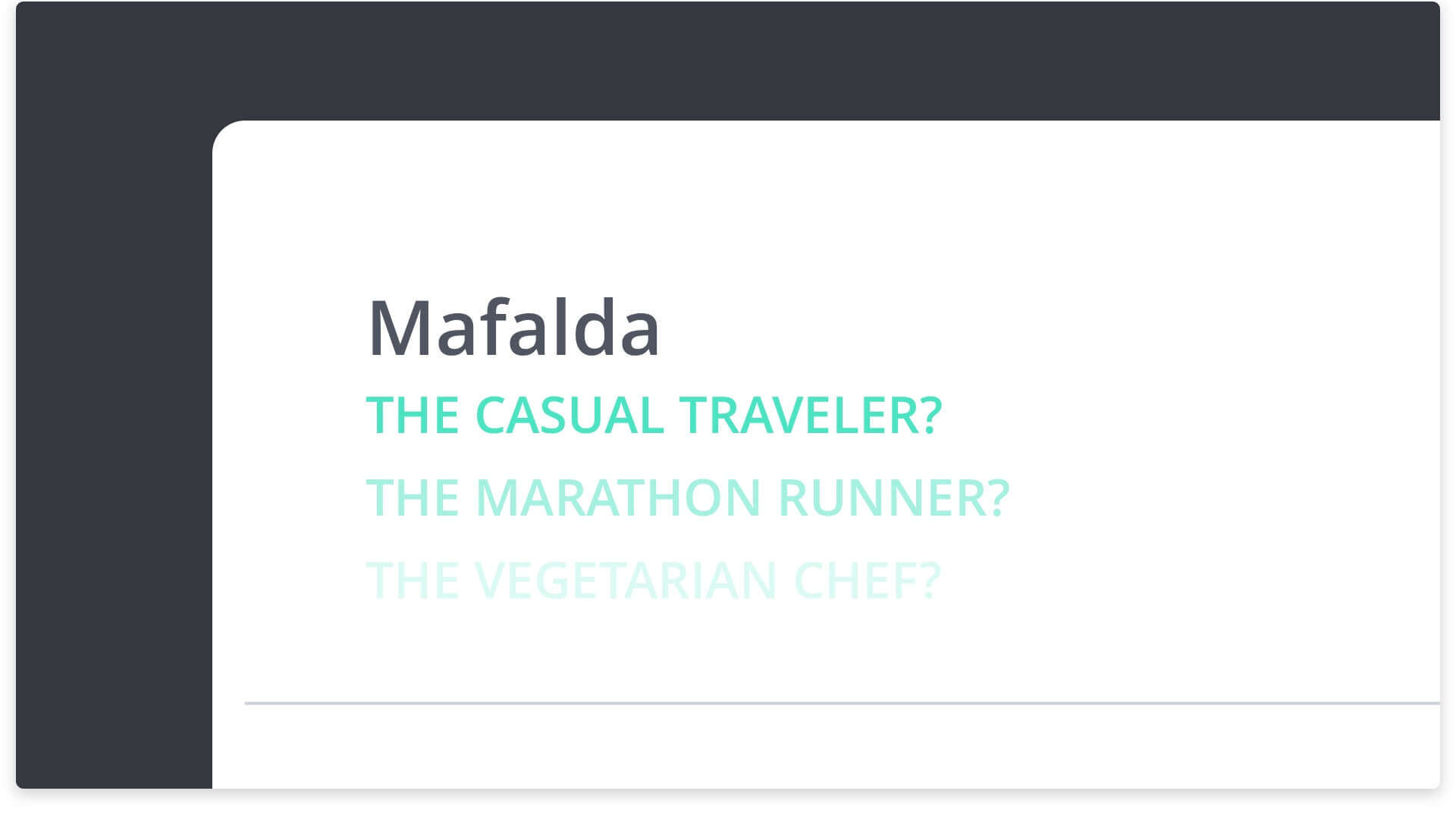
Make quests, not tasks
Almost anything we want to do and achieve can be thought of as a project. This is where task management comes in handy. What I do is think of tasks as quests. They will be your “what”, and they need to be easily achieved in a week/month.
If you want to be someone that leaves work earlier, to beat the traffic and enjoy more daytime, think of a quest like “Get out of bed before 8 am at least once this week”.
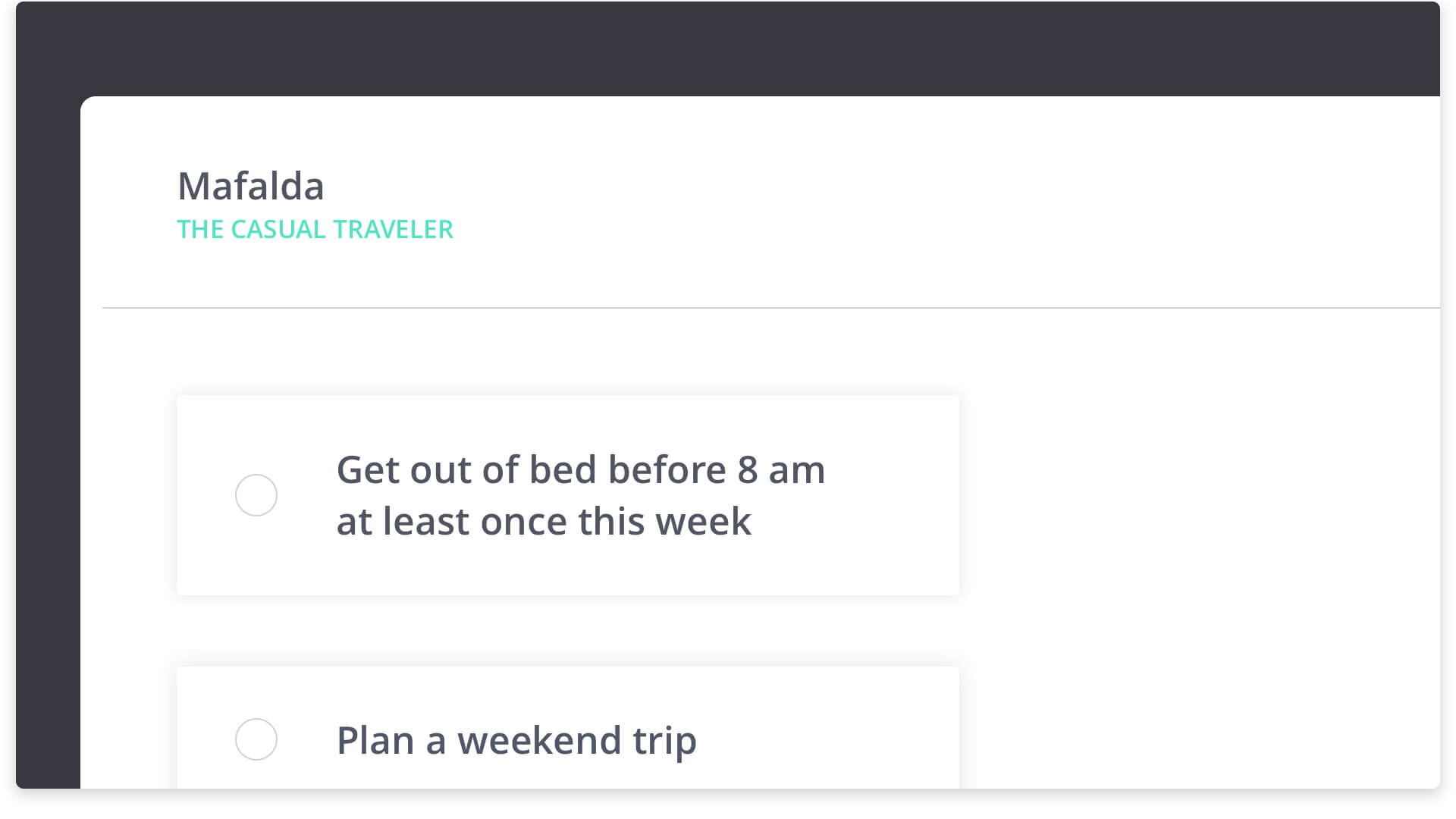
Level 1
- Be specific. Don’t write down “take the stairs”, instead try “take the stairs 2 times this week”.
- Go lower than your expectations. If you think you can try 5 new nearby restaurants this month, write down you’ll try 2. Easier quests mean a higher chance of success, and room to reach that amazing feeling of overachievement.
- Estimate the worst case scenario. When estimating time for a design project, we go task by task and consider the maximum amount of hours we may need to complete it, not what we are confident it will actually take. This is because research, external factors and the overall unknown can occur. Acknowledge it and be prepared. Anything is better than going over deadlines.
- Don’t go crazy with daily quest. Everyday compromises are the easiest to break. If you need to, sacrifice quality over quantity to stay consistent. Can’t do 5 squats today? Do 1. Can’t put aside 50 cents for traveling today? Put 1 cent. Being a perfectionist here will only get in the way of progress.
Build a personal experience
In UX we create personas with our potential users demographics, goals, motivations, frustrations, etc. It becomes useful to build stories around them, so we can imagine what they may want to accomplish with an app or website, what tasks would they need to perform, and how would they do it.
On this adventure, you are your own user!
Take your personal, social and cultural experiences into account, and consider the influence of your physical environment while attempting to meet your goals.
Maybe you’ve always wanted to be the type of person that reads a book before going to bed, but always manage to fall asleep after the first sentence. At the same time you probably have lunch while looking at your phone, scrolling away your time.
Adapt your quests, make it work for you. Write “read a paragraph during lunch, 4 times this week” and see where that gets you. I started this years ago with comics, and now read from 3 to 5 per week!
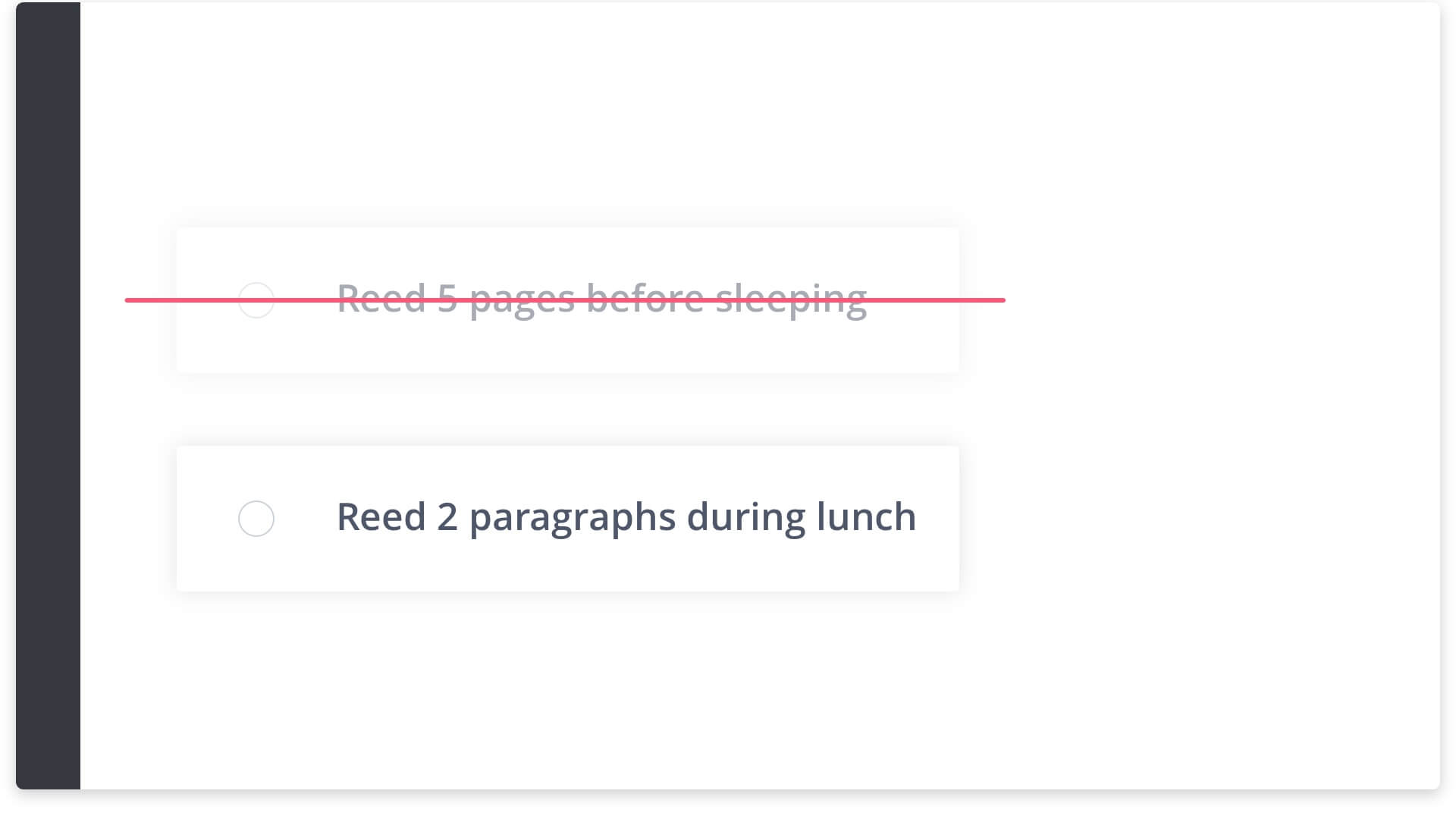
Quest is done? Level up!
This is why it’s important to keep your quests easy.
After completing one, analyse and measure the effort it took you to complete it, along with the joy it brought. Is it something you want to continue doing this year? Are you confident you can achieve another milestone during the next week/month?
After this analysis, write down a follow up quest. Waking up after 8 am didn’t feel great? Try 8h30 instead. Tried 2 new restaurants and fell in love with a particular dish from a different country? Try cooking new recipes from that cuisine now.
On my notebook, I view each page as a new level. This way I have all the space I need for new quests, and can still keep them connected, page by page.
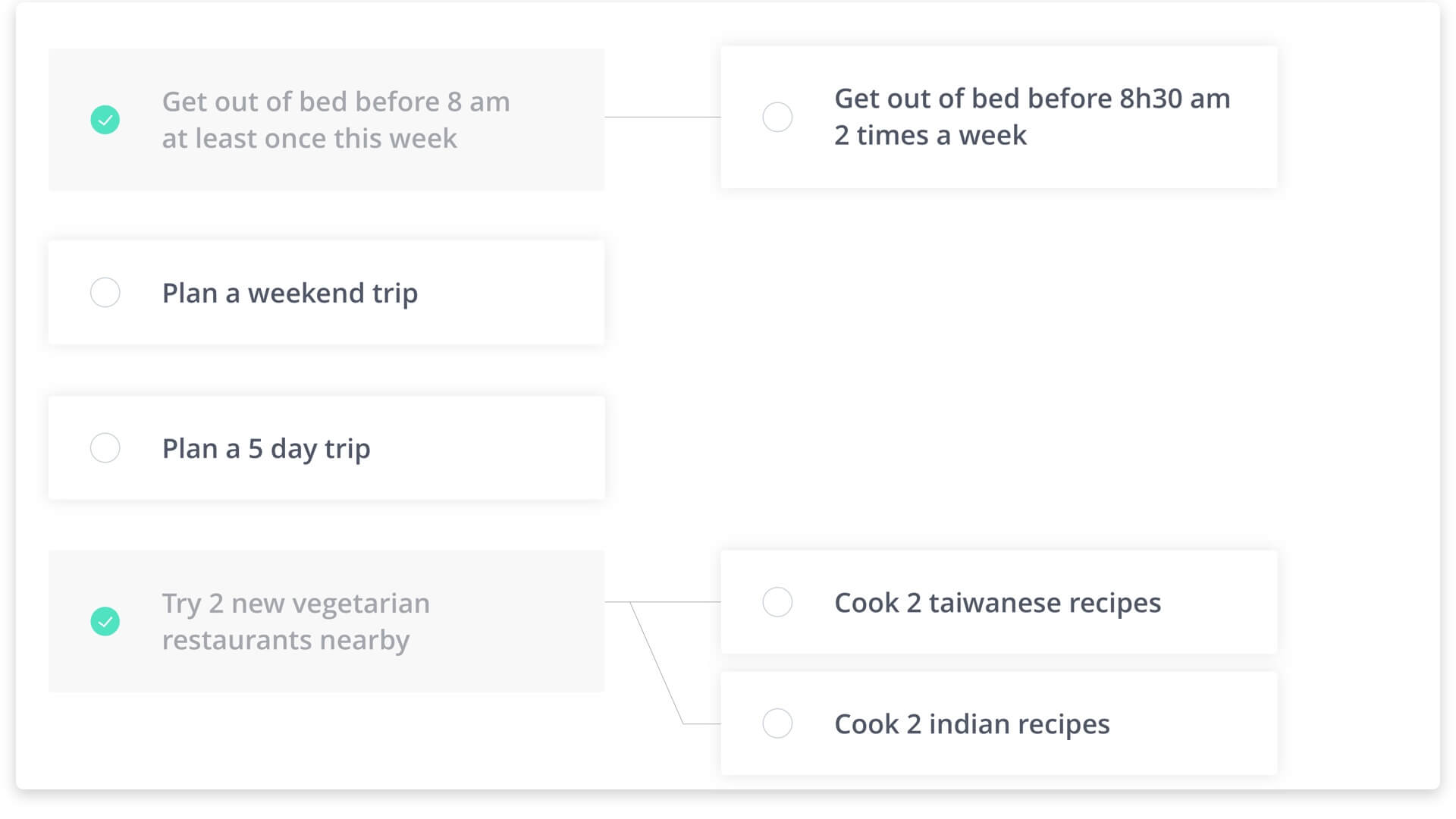
Why this works for me
I’m more active towards my achievements. Checking off things, like you would on a grocery list, that you wrote somewhere in January doesn’t work. Our motivations evolve during the year, and so should our quests.
I get instant gratification more often. Last year, instead of marking my one big list item – “Run a half marathon”, I got to mark 5 milestones along the way instead!
It weighs incomplete tasks differently. Instead of seeing my “Keep 10 plants alive back home” as a failure, I view it as an incomplete level.
I’ll get to see my progress. A basic list is just stacking up achievements, but with this method you get to see your evolution. Better yet you are more motivated to pick up where you left off next year, without feeling like you’re starting all over again!
It’s easier to evaluate myself. What was easy and what wasn’t? What did I get most excited about? What do I definitely want to take to the next level?
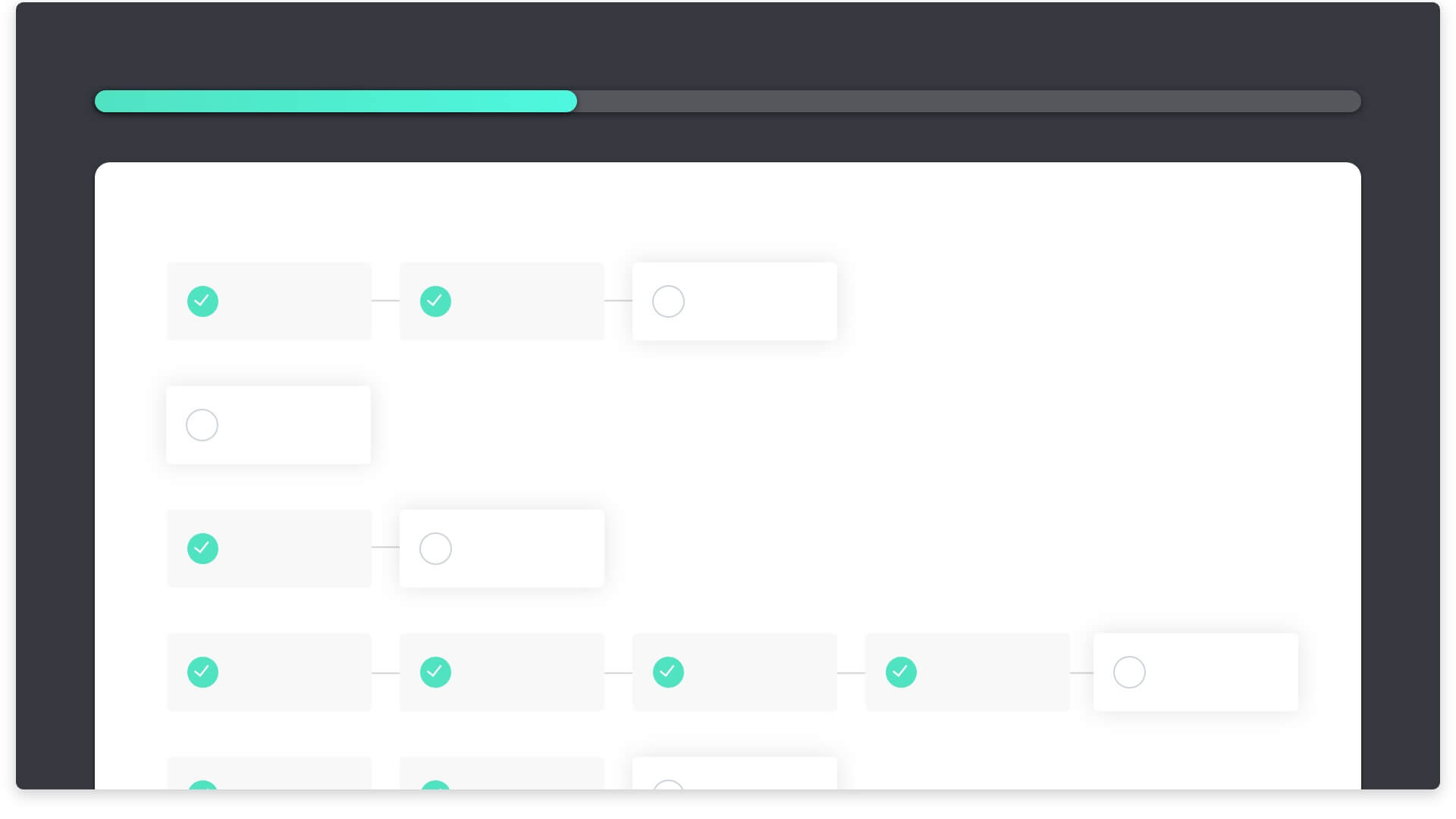
Some apps have attempted to gamify to-do lists, but I find writing down my own progress in paper more captivating. It takes discipline and patience to see results, things an app will not give you.
Give it a try! Don’t worry if you didn’t start on the 1st of January at the struck of midnight, who does that anyway?
Progress ends when you want it to end. Whatever you want to do, stop finding excuses and work on improving that 1% every day!